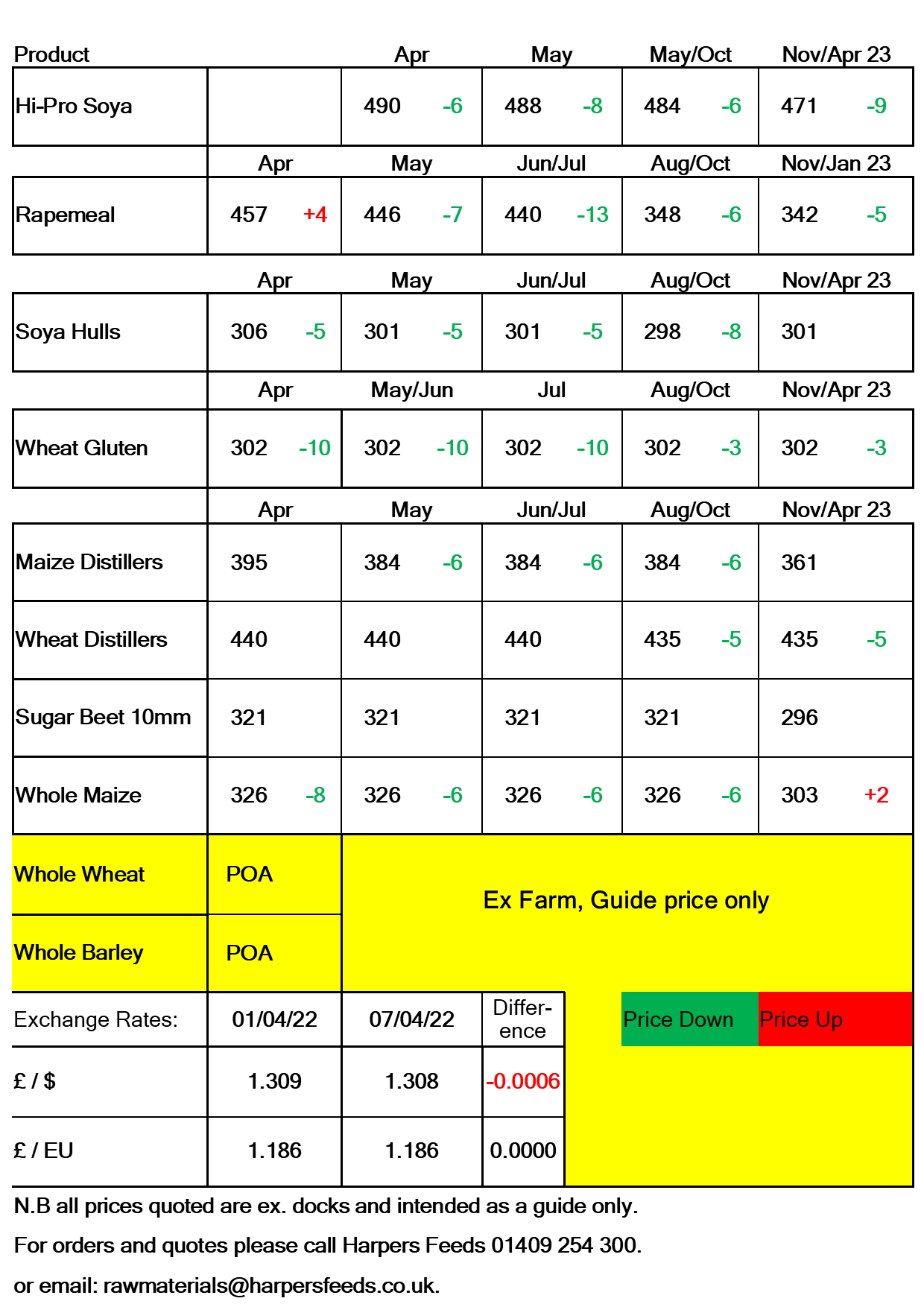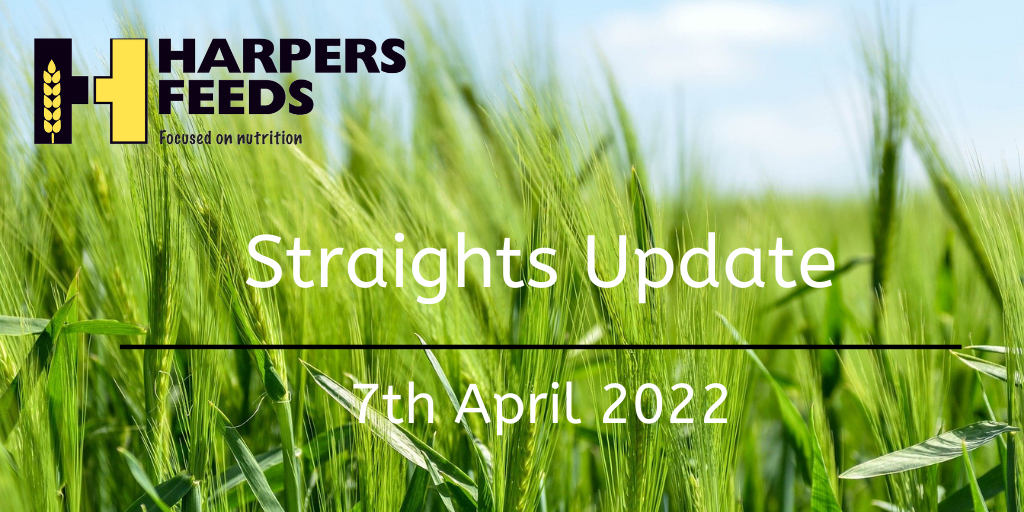Market Overview
On Tuesday the USDA released their first crop progress report for 2022. Unfortunately crop conditions were disappointing as the report fell below the lowest trade estimates. Only 30% of US winter wheat was rated in Good – Excellent condition. comparative to this time last year, US winter wheat was rated at 53% Good – Excellent condition. This is due to the ongoing drought seen in much of the US plains as the crop enters its keys growing period.
However, with the crop not due to be harvested until June/July, there is still plenty of time left until harvest. Weather conditions will be key in market direction. The overall report rated US winter wheat at 18% Very Poor, 18% Poor, 35% Fair, 27% Good and 3% Excellent. The Good – Excellent percentage has dropped by 14% since the previous crop progress report.
The poor weather conditions have given support to global wheat prices. With peace talks stalling between Ukraine and Russia, any potential prices declines were short lived and the markets firmed as Russian attacks continued. The limited rail exports moving out of Ukraine are struggling with backlogs, adding further pressure to an already tight situation.
Barley is likely to continue to track wheat markets while both global and domestic supply remains tight.
The 2021/2022 Brazilian soybean harvest was 75.8% complete by 26th March. By this time last year, harvest was at 69.8%. However, Argentina harvest is just at 4.4% complete and there are concerns that recent cold weather and frosts have hampered yield prospects.
Argentine grain transports are calling for strike action, demanding an increase in grain freight rates as the higher fuel costs begin to bite. With 86% of the soybeans transportation to ports being moved by truck and the the bulk of the soybean harvest in the second quarter of the year, strike action could impact prices.
Although the USDA Prospective Planting Report figures indicated that US farmers intended to plant more soybeans and maize this season, many felt this did not reflect the current sentiment of US farmers as parts of the survey were conducted before the start of the Ukraine Conflict. With maize exports being lost or delayed from Ukraine and Russia, will US farmers reconsider their position?
The rapeseed supply and demand picture remains tight, underlying support will remain for the market, particularly if Ukraine sunflower plantings are reduced. If this happens, oils demands may shift to rape oil on a longer term basis.







